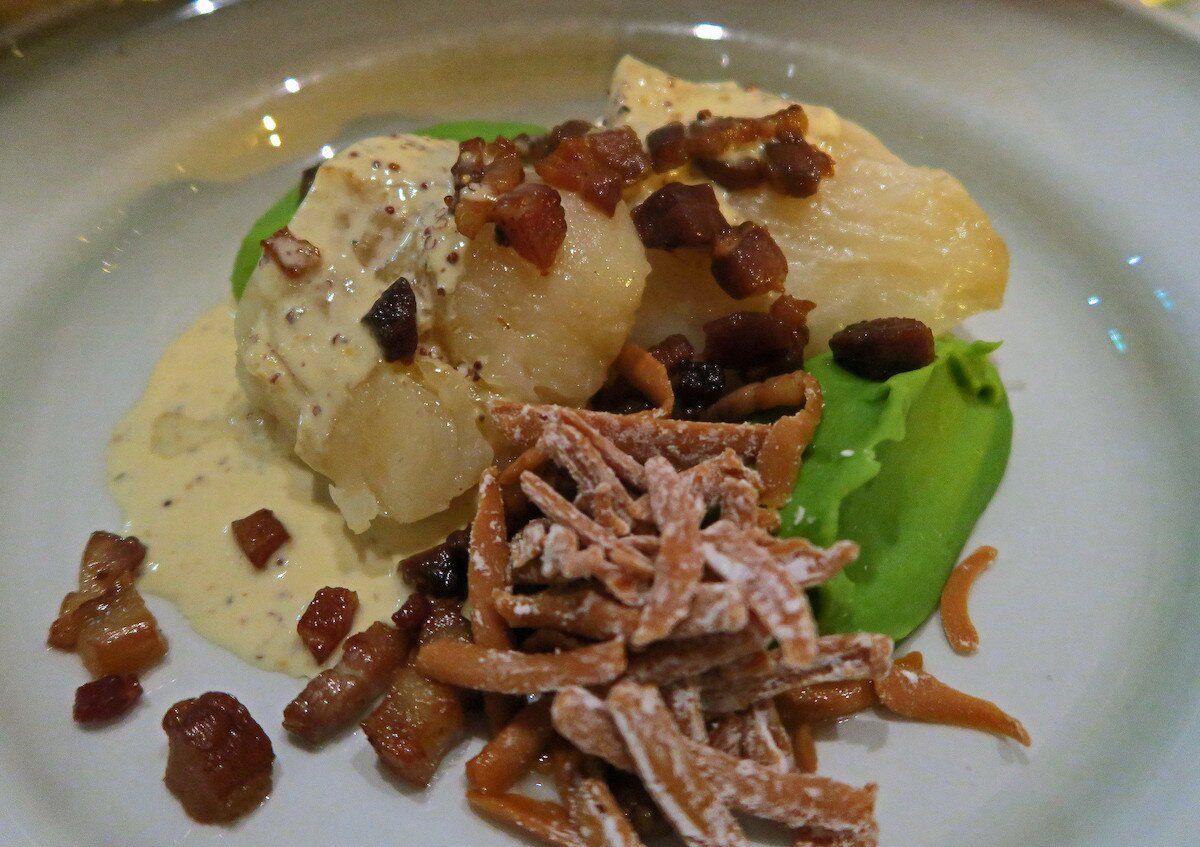Lutefisk is among Norway’s most talked-about foods, having spurred decades of debates over its origins and flavor.
While some adore this meticulously prepared meal, others avoid it at all costs.
Literally translating to “lye fish,” lutefisk is a meal composed of dried stockfish (usually cod, ling, haddock, or pollock) soaked in lye. It’s thought to have originated in Scandinavia.
Read on to learn all about the fish dish that elicits such strong feelings in its fans and its critics.
Lutefisk history
The exact origin of lutefisk hasn’t been confirmed with absolute certainty, but written records and oral legends indicate the dish has been around for centuries.
During the mid-16th century, Swedish author Olaus Magnus wrote about its preparation, touching upon what he saw as the appropriate way of serving it: doused in butter. Historical documents also indicate that the cod was prepared as a dish for special occasions in 16th-century Sweden.
The dish also – supposedly – has ties to the Vikings, who are thought to have feasted on the fish between the eighth and eleventh centuries.
One legend recalls St. Patrick‘s attempt to poison Viking raiders in Ireland with the lye-drenched cod. Rather than being killed by it, however, the Vikings supposedly enjoyed the flavor and declared it a delicacy.
The tale’s timing doesn’t quite match up (St. Patrick was born about three centuries before the Viking Age), but the story provides food for thought on lutefisk’s possible origins.
Another legend has it that during a pillage, a group of Vikings burned down a fishing village, including the wooden racks upon which cod was drying. In an effort to save their settlement, the local fishermen who had been ransacked poured water all over their village, including the drying racks. After ashes had covered the cod, it rained, creating a sort of lye slush.
Later on, the villagers realized the dried fish took on an appearance similar to fresh fish. Interested in the creation, they rinsed the fish to remove the lye, then boiled it. Finally, one courageous villager dared to try the jiggly cod and referred to it as “not bad” – and the rest is history.
No matter its true origins, lutefisk clearly took firm roots in Norwegian culture – and it’s here to stay.
Lutefisk traditions
It’s said that about half of all Norwegian immigrants moved to the US to escape lutefisk, while the other half did so to share its tastiness with the world.
During the early-to-mid 19th century, large Norwegian migrations to the US began, many taking root in midwestern states such as Wisconsin and Minnesota (which, today, are the top two states with the highest Norwegian-American population).
On their strenuous journey over the Atlantic, the Norwegian migrants supposedly survived on board with primarily lutefisk as sustenance. Today, many Norwegian-Americans eat the dish in order to honor their ancestors’ courage and acknowledge their hardships.
Scandinavian- and Norwegian-American households often serve lutefisk for festivities, too; typically on Thanksgiving and Christmas.
In the midwestern states, the fish can actually be found at local supermarkets, or served at Norwegian churches as part of community gatherings.
Many Norwegians, on the other hand, are happy to eat lutefisk no more than once a year – at Christmas. A stark contrast to the citizens of Madison, Minnesota, the self-proclaimed “lutefisk capital of the world,” whose unofficial mascot is a giant plastic fish nicknamed “Lou T. Fisk.”
So, lutefisk is considered to be eaten more regularly in the US than in any of the Scandinavian countries today. Despite this, it remains an essential tie to traditional Norwegian culture on both sides of the Atlantic.
Where is lutefisk eaten in Norway and the US?
There’s plenty of places to taste-test lutefisk in both the United States and Norway.
In lutefisk-loving Madison, Wisconsin, Scandinavians and non-Scandinavians alike gather at Lakeview Lutheran Church, which hosts annual lutefisk dinners, typically at the beginning of November.
Up to 1,000 pounds of lutefisk are cooked, and over 200 sheets of lefse are prepared. So, it’s no surprise the preparation for this monumental dinner begins in September.
If traditionally prepared lutefisk doesn’t sound like your style, you can spice it up with soy sauce for an Asian fusion twist, or substitute it with kjottboller (Norwegian meatballs) instead; both options are offered at the church.
If you’re in Norway, Oslo is a great place to start if you’ve never tried lutefisk before, as there are many authentic dining options in the city – and the fish is locally caught.
Gamle Raadhus Restaurant, for example, uses sea-to-table white fish and other organic produce to prepare lutefisk and its corresponding side dishes.
You’ll probably receive the freshest stockfish, however, in Tromsø, the heart of Troms og Finnmark county. The region’s chilly Atlantic currents manifest the perfect environment for the species. Tromsø’s own Emma’s Drommekjokken is a charming restaurant that uses salted and pan-fried cod for their lutefisk, pairing it with traditional sides such as mashed peas and vegetables.

How exactly is lutefish prepared?
Lutefisk’s base can be any kind of white fish, but cod is most commonly used.
To bring the fish to its proper taste and consistency, a two-week preparation process is required.

After being caught, the fish is air-dried and soaked in water for several days, with the water changed daily. As the fish softens, lye (a strong alkaline solution) is added to create a jellylike consistency.
Once again, the fish soaked in water for six days, with the water changed daily.
At this point, the lutefisk regularly releases a pungent fishy smell. The odor is so strong that it’s spurred lutefisk jokes galore (for example, some specialty stores sell shirts that say “Lutefish Survivor” on them).
Once the prep process is done, the viscous fish can either be steamed or baked, and finally served with bacon bits, boiled potatoes, warm cream or melted butter, and mashed peas.
Lutefisk lovers attribute its taste to salmon or tuna – when it’s properly prepared, fans of the fish say its taste is relatively mild.
If you’re on the opposite end of the lutefisk-loving totem pole, and you find yourself face-to-face with the dish, try washing it down with an aquavit. The liquor, popular across Scandinavia, has a potent taste strong enough to rival that of the lutefisk’s.
Is lutefisk toxic?
Perhaps the most important – and infamous – part of lutefisk’s production process is adding lye to the fish.
Properly prepared lutefisk is not toxic, but the lye does create a highly alkaline environment. So, the meal can be problematic for those with stomach ulcers or other gastrointestinal problems.
Certain cutlery and dishware used in the making are also at risk here – they may corrode if not properly cleaned.
If you’re a lutefisk survivor – on a scale from loving lutefisk to hating it, where do you find yourself? If you haven’t tried the controversial cod yet, are you planning on it?
Source: Norway Today
Do you have a news tip for Norway Today? We want to hear it. Get in touch at [email protected]






Leave a comment